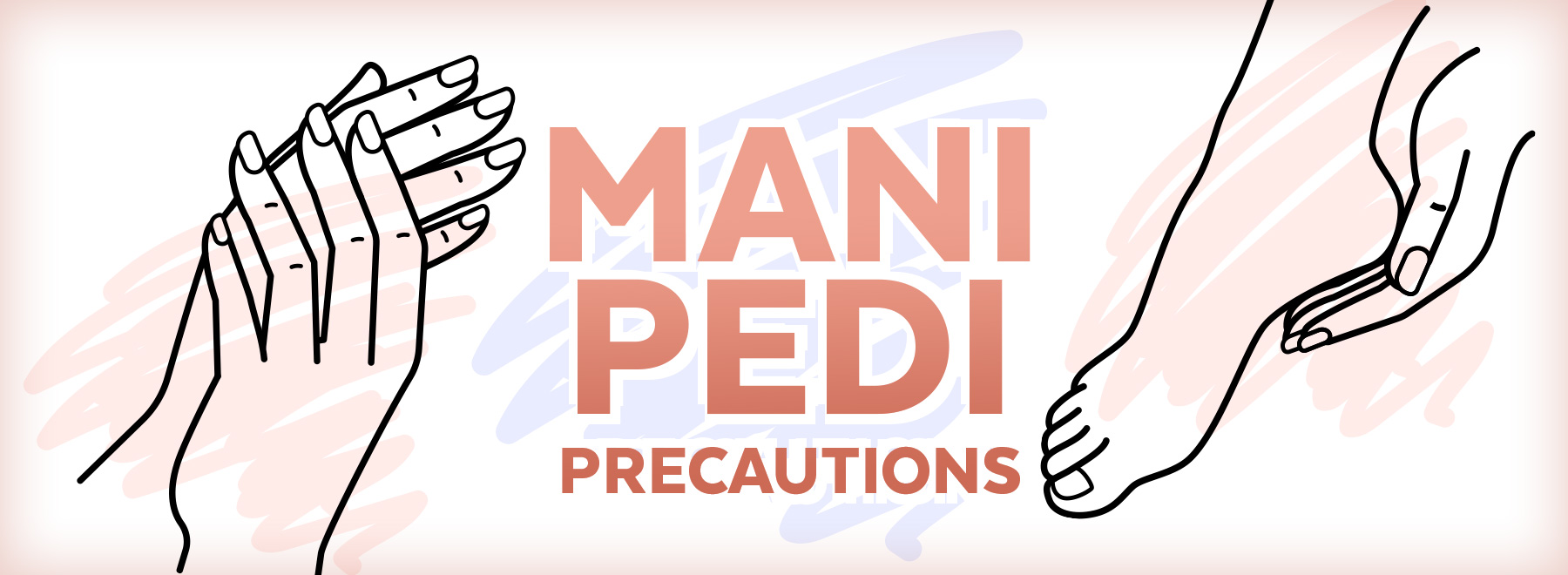How safe are nail salon trends, tools and techniques?
Every three to four weeks, Jackson resident Shaundra Dixon treats herself to a manicure and pedicure, an important part of her physical and emotional self-care. While she prefers acrylics (fake nails) for her fingertips she indulges in gel polish for her toes.

As nail salons have exploded in popularity in the last decade, tools and techniques have evolved, and gel polish -- coveted for its glossiness, chip resistance and longevity -- has transformed the industry.
While traditional polish dries naturally with ever ubiquitous oxygen, gel polish will only dry, or cure, under an ultraviolet lamp. Therein lies potential dangers.
Gel manicures can cause nails to peel, crack and become brittle, according to the American Academy of Dermatology Association. The process of removing it is also not without risks.

“Gel polish can be more damaging to the nail particularly if it is being picked off or drilled off,” said Dr. Chelsea Mockbee, assistant professor of dermatology. “Using acetone to remove the polish completely rather an abrasive technique is a better option.”
That’s not the worse part.
“Recurrent UV exposure is a risk factor for skin cancer and premature aging,” said Mockbee.
According to a January study by Nature Communications, UV nail dryers use several bulbs that release ultraviolet rays to activate the photo initiators in the gel, causing it to harden and seal to the nail, possibly causing DNA damage.
Researchers also found cases of melanoma and non-melanoma either on the nail or on the back of the hand they believe is caused by radiation from the dryers.
Dixon said she’s never noticed any damage to her nail. As for the UV dryer: “I have thought about the risks but didn't think it would cause any harm.”
Beyond nail polish and UV dryers, Mockbee said nail salons pose other potential dangers.
“The risk of bacterial or fungal infection is most likely the greatest risk,” she said. “This is particularly important for people with diabetes or immunocompromised conditions making them at increased risk. Make sure you choose a nail salon that you are confident properly cleans and sterilizes their tools between every client.”
That includes foot spas, which should be sterilized after each use with a disinfectant approved for hospital use, according to the Environmental Protection Agency. The label on the disinfectant should include the word “disinfectant,” as well as either “hospital,” “medical” or “health care,” in addition to an EPA registration number.
Others concerns include allergic reactions to the acrylates or shellac in nail polish or the glue used on artificial and acrylic nails.
“I do see patients with hand dermatitis and often perform patch testing to identify potential allergens that may be causing allergic contact dermatitis,” said Mockbee.
“It’s also important to check your nails for any dark lines or streaks as abnormal moles or skin cancers.”
The AADA offers these recommendations for safely navigating nail salons, which Mockbee endorses:
- Be proactive with your manicurist. Not all nail salons are created equally, so ask your technician if the tools are sterilized, and make sure they clean and disinfect tools after each client.
- Consider traditional nail polish instead of gel polish, especially if you notice damage to your nails or are allergic to acetone.
- Apply a water-resistant sunscreen with an SPF of 30 or higher to your hands before getting a gel manicure. This will prevent skin cancer by protecting your skin from the ultraviolet radiation used to seal gel nail polish to the nail. An alternative is to wear dark gloves with fingertips removed while the gel is being applied.
- Don’t pick at gel nail polish to remove it; it’s best to have a manicurist remove it.
- Only soak your fingertips in acetone when having the polish removed to protect the surrounding skin. Or use cotton balls soaked in acetone after wrapping aluminum foil around your fingertips.
- Take a nail polish holiday for at least one week between visits to the salon to give your nails time to repair.
- While on the nail holiday, rehydrate your nails by applying a moisturizer like petroleum jelly throughout the day.
- Consider getting a gel manicure for special occasions only and see a board-certified dermatologist if you notice any unusual changes to your nails or have a persistent nail problem.
To schedule an appointment with a UMMC dermatologist or learn more about the services offered, call (601) 815-3374 or visit here.
The above article appears in CONSULT, UMMC’s monthly e-newsletter sharing news about cutting-edge clinical and health science education advances and innovative biomedical research at the Medical Center and giving you tips and suggestions on how you and the people you love can live a healthier life. Click here and enter your email address to receive CONSULT free of charge. You may cancel at any time.



